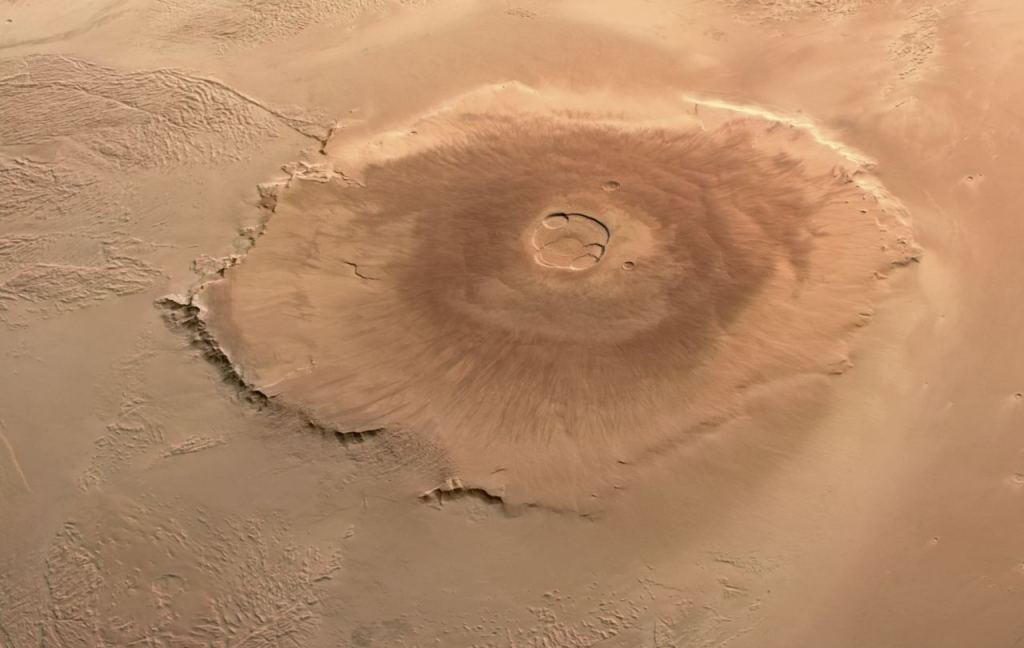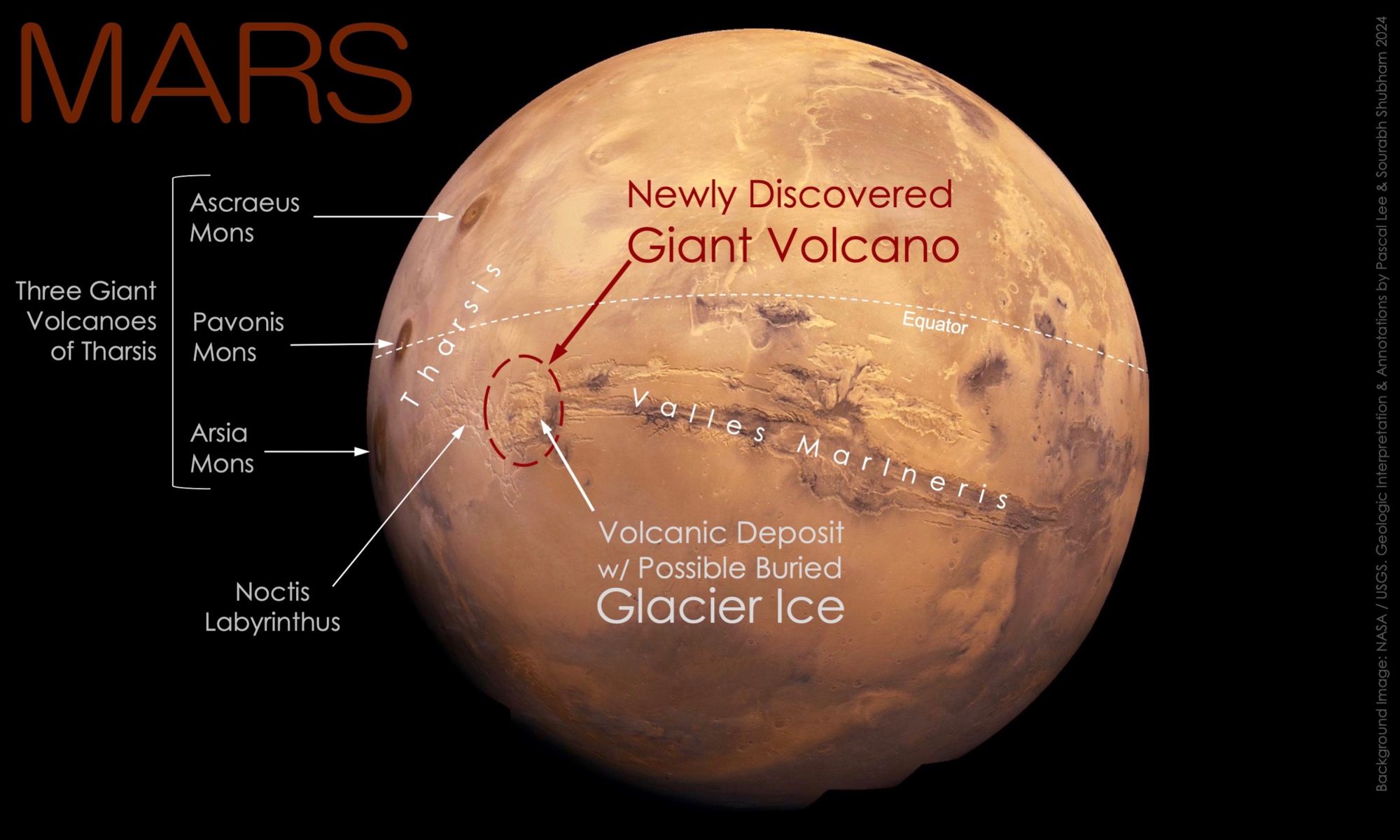Olympus Mons is well known for being the largest volcano in the Solar System. It’s joined on Mars by three other shield volcanoes; Ascraeus, Pavonis and Arsia but a recent discovery has revealed a fifth. Provisionally called Noctis volcano, this previously unknown Martian feature reaches 9,022 metres high and 450 kilometres across. Its presence has eluded planetary scientists because it has been heavily eroded and is on the boundary of the fractured maze-like terrain of Noctis Labyrinthus.
Mars seems to like shield volcanoes. They are a type of volcano that have a broad gently sloping profile and are generally composed of basaltic lava flows. The flows spread out over large distances during eruptions before eventually solidifying and creating long gently sloping faces. They tend to be the result of divergent plate boundaries where tectonic plates gently drift apart. It’s not just Mars that hosts them, here on Earth Mauna Loa and Mauna Kea in Hawaii are great examples of shield volcanoes.

Noctis volcano was found on the edges of Noctis Labyrinthus, a region whose name means Labyrinth of the Night. It’s a fascinating surface feature with a complex valley, canyon and ridge system within Valles Marineris. It’s a distinctive feature on the Martian surface with disorderly, intersecting valleys and plateaus. Thought to be the result of erosion and tectonic activity the region has masked the new volcano, until now.

A team of scientists, led by SETI Institute planetary scientist Dr Pascal Lee said “We were examining the geology of an area where we had found the remains of a glacier last year when we realised we were inside a huge and deeply eroded volcano.” There were a number of signs that revealed the volcanic activity in the region and led to the volcano’s discovery. Located on the eastern edge of Noctis Labyrinthus there were a number of meseas – or flat topped mountains – arranged in an arc that seemed to reach a peak before descending away from an apparent summit area. A gentle slope softly slips away over distances of over 200km and close study seems to reveal the remains of a caldera. The study revealed what looked like a collapsed crater that once contained a lava lake and there was significant evidence of lava flows in the area including pyroclastic deposits.
The study of Mars over the years since the invention of the telescope and more recently the advent of space flight has revealed a complex geological history. The features across the planet seem to reveal significant modification too perhaps from thermal erosion, glacial erosion and fracturing of the crust.
The team conclude that the volcano is a shield volcano that has been built up of layers of accumulations of pyroclastic material, lava and ice. The ice it seems, just like volcanic lava, has built up over repeated years of snow and ice build up on the flanks of the volcano. With the fractures, likely driven by plate uplifts in the general Tharsis region, lava was able to seep through different regions of the volcano. Where the ice has been buried and subsequently melted, catastrophic collapses have occurred compounding the challenge of identifying it.
Source : Giant Volcano Discovered on Mars


A shield volcano on the high side could make more sense of the erosion channel of Valles Marineris with lava and/or water flows. It sits with the Tharsis bulger region of a deep mantle diapir potentially feeding it to its size and longevity.